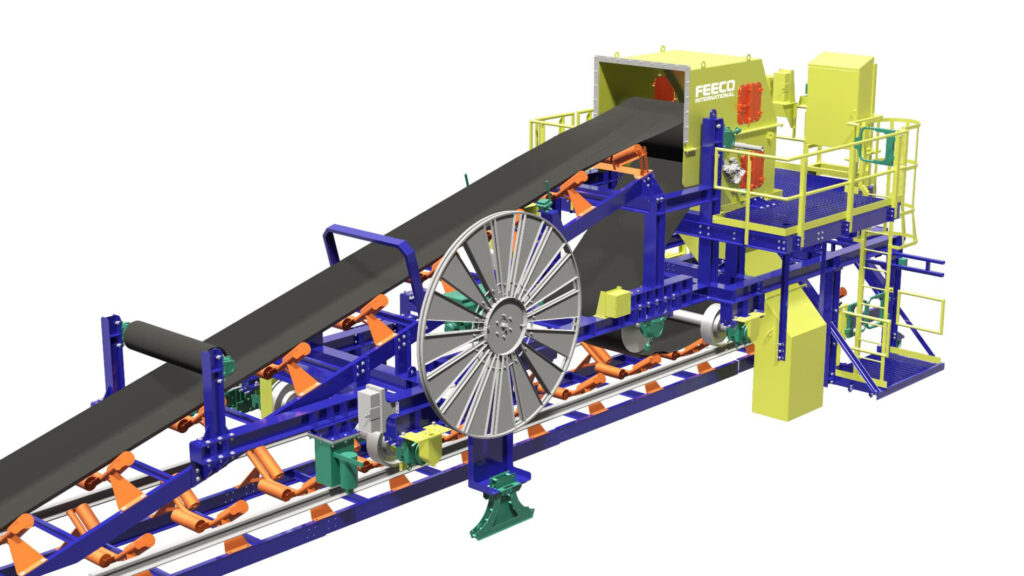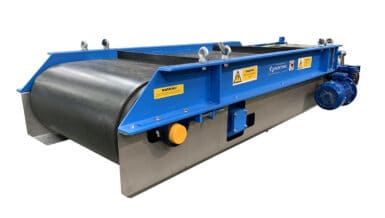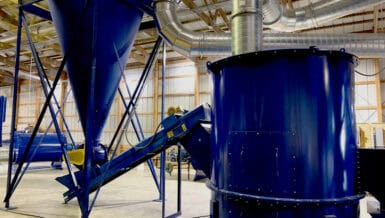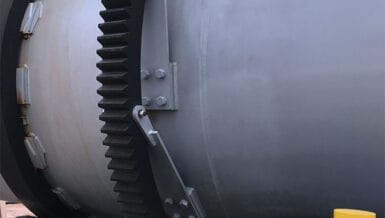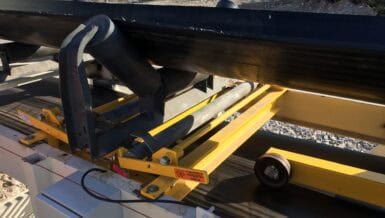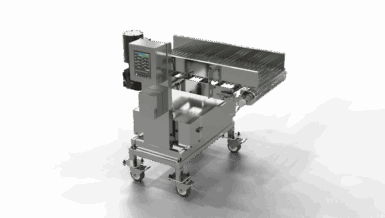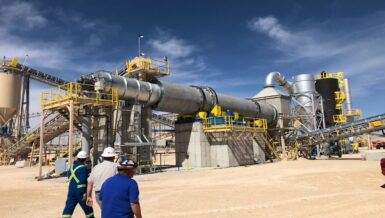A belt tripper, also called a tripper car or tripper conveyor, is added to a conveyor system to increase its discharge capabilities. Trippers can be configured to discharge on one or both sides of a conveyor, either continuously or at predetermined locations, making them ideal for storage environments. This discharge flexibility allows for the creation of long continuous piles, separate piles, or discharge into bins or a bulk unloading system.
Project Challenges
The mining company’s first tripper would be used to distribute raw potash ore from the underground mine to a storage facility. The second and third trippers would convey granular and standard potash fertilizer product to a storage building prior to loadout.
While the raw ore tripper would be conveying 2,013 MTPH in the project’s first phase, it would eventually need to handle upwards of 4,080 MTPH. To address this phased ramp-up, FEECO engineered an oversized frame that would be capable of handling the higher capacity.
The drive assembly was sized for the initial 2,013 MTPH but could be easily swapped out for a larger drive when the company was ready to increase production. This approach gave the customer the flexibility to rely on a single system to serve their needs throughout project ramp up.
The overall handling system, trippers included, would feature an advanced automation and controls system through which the customer would have precise control over every operating parameter – tripper position, emergency stop devices, material flow, etc. Numerous aspects of machine health would also be monitored, including vibration, temperature, oil quality and level, auto-lube system, and belt alignment.
This requirement was nothing unusual, but because of the extensive travel distance of the trippers (~1,360 feet), typical copper communication would be insufficient. To ensure a reliable, high-quality signal, the system would need to utilize fiber optic cable, bringing a unique set of challenges to the project.
Because instruments and the control center are based on copper communication technology, all communication signals would need to be converted from copper (at the instrument level) to fiber optic and back to copper (at the control center).
Storage of the fiber optic cable also presented a challenge; cable would need to be carefully wound onto the reel without wrapping too tightly. Additionally, because the reel is stationary on the mounting side of the tripper but needs to rotate on the open side, a much more intricate device would be required to maintain communication between the fixed connection on one end, and the rotating connection on another end. With copper, this is a simple device called a slip ring. In fiber optics, however, an Optical Fiber Transmitter is employed.
Adding to the complexity of the project, the corrosive and sometimes dusty nature of potash requires special measures to protect equipment and employees, with dust being of particular concern, as it would interfere with a laser positioning system (for tripper positioning). While microwave transmitters were also an option, these would’ve added significant expense to the project. Instead, FEECO utilized sector switches and shaft encoders to monitor tripper position.
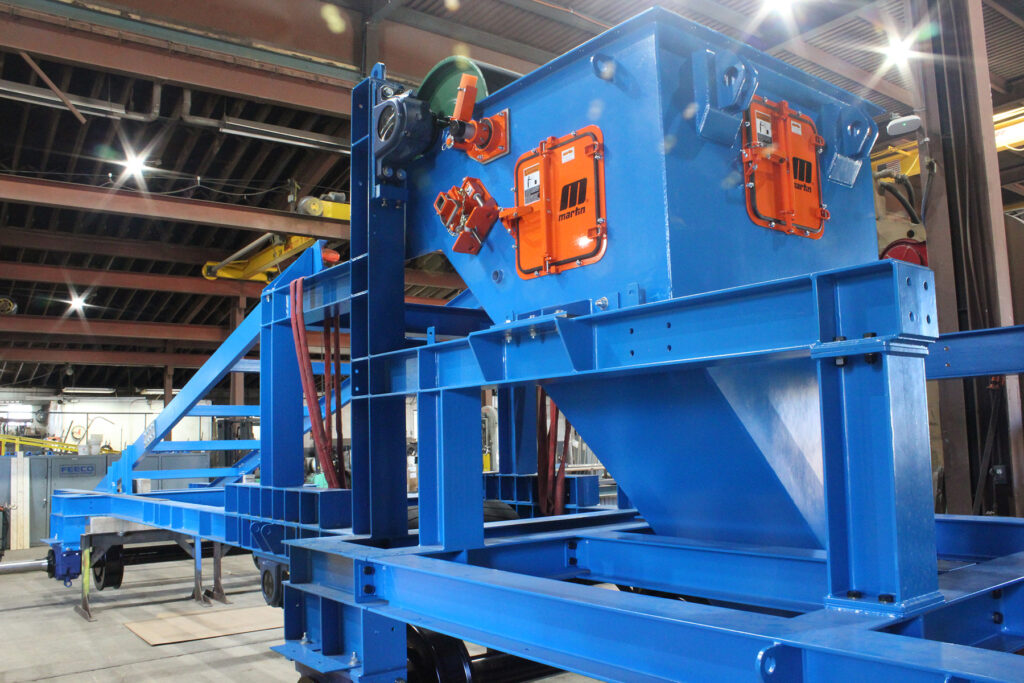
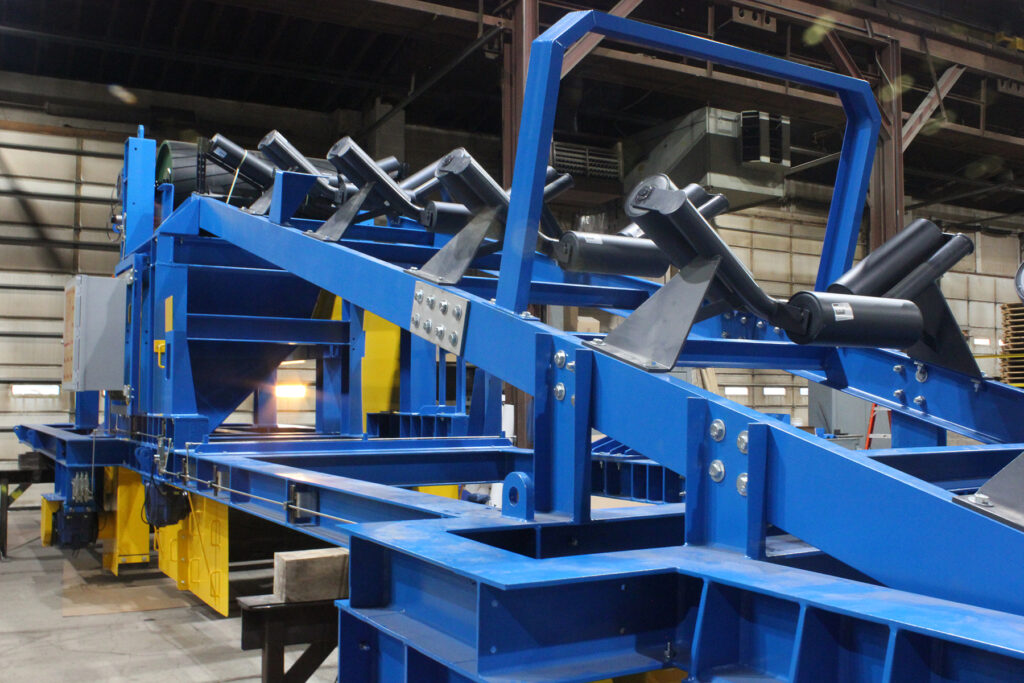
How the Custom Belt Trippers Met These Needs
Backed by decades of experience in the potash industry, FEECO brought the customer’s vision to life to deliver a seamless potash storage and handling system.
Each tripper was designed for high-capacity operation under corrosive conditions, with the highest capable of moving 4,080 MTPH of material through the system.
A number of features were incorporated to improve overall flexibility and system control, including precise tripper positioning instruments, rail clamps, machine health monitoring systems on reducers and bearings, and bearing auto-lube systems.
As minimizing downtime was a top priority for the customer, FEECO designed each tripper not only for longevity, but also for ease of maintenance and equipment access, including built-in, dedicated service bays.
The project took a collaborative effort on the parts of several vendors, with FEECO effectively serving as project manager.
The result was a highly advanced system that prioritized safety, maintenance, and seamless operation, cementing FEECO as the preferred tripper supplier for the customer.
By Dan Baxter | Material Handling Sales Engineer | FEECO International



